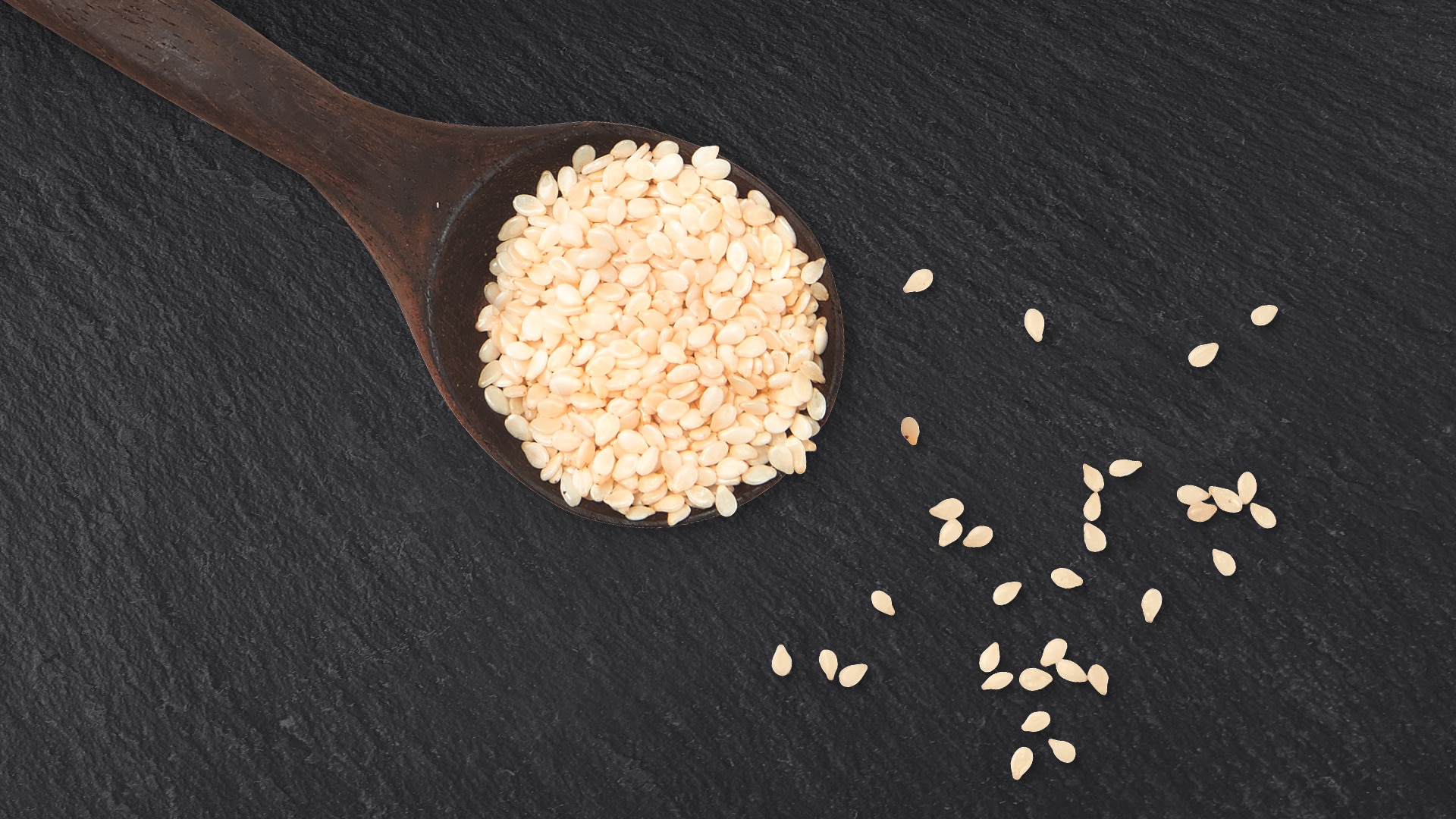Skip to:
Wondering “where do sesame seeds come from”? Sesame seeds are expected to originate from East Africa or India, with Sudan, Myanmar, and Indonesia being the biggest producers. If you’ve ever sampled dishes from the Mediterranean or Middle East, chances are you’ve eaten sesame seeds in one of its many forms. When it comes to sesame seeds, the phrase “good things come in small packages” certainly comes to mind! While they may be tiny (3-4mm to be exact!), sesame seeds are one of the most valued and varied crops. Whether they’re being sprinkled on salads, topping burger buns or made into tahini, one thing’s for sure: they’re versatile little seeds.
In this article, we’ll be exploring which plant sesame seeds come from, how you can incorporate them into your recipes and most importantly, why they’re one of our Future 50 Foods. You’ll also find out exactly how the phrase “open sesame!” came to be…
What Are Sesame Seeds?
Sesame seeds are small, oil-rich seeds produced by the sesame plant (Sesamum Indicum). They have a crunchy texture and can be eaten raw, toasted, added into dishes, ground into flour or pressed to make sesame oil. They can also be ground into a paste to make tahini, a rich, creamy dressing popular in Mediterranean and Middle Eastern cuisine. Sesame seeds have a rich, nutty flavour which can be enhanced by toasting the seeds.
Sesame seeds offer a range of nutritional benefits, although it’s worth noting that because they are so tiny, you may need bigger servings to really reap them. These little seeds are packed with vitamins and minerals and are high in healthy fats.
Where Do Sesame Seeds Originate From?
The sesame plant is grown across many tropical and subtropical regions across the world, including Asia, Africa and South America. Records show that sesame seeds have been harvested for over 4000 years, and that Ancient Egyptians made flour by grinding the seeds into a fine powder.
Ever wondered “how do sesame seeds grow?” or “what do sesame seeds grow into”? If you’ve ever thought about what would happen if you were to plant a sesame seed, or if they even grow into anything at all, we can explain. Sesame seeds grow into sesame plants, a flowering plant which produces green pods which look a little like okra. The sesame seeds are held inside these pods and once matured, the pods are harvested and dried. This causes the pods to split open from top to bottom, releasing the seeds - hence the phrase “open sesame”!
Sesame plants thrive in hot, dry conditions and are known for being very undemanding. Unlike other crops, they’re highly resilient to diseases, drought, and insects and can grow even in poor quality soil, making them an easy yet nutritious food to grow.
Spice up Your Next Meal with Sesame Seeds
The perfect multi-tasker, sesame seeds can be used to boost a whole range of dishes. Looking for more ways to include sesame seeds in your cooking? Here are some of our favourites:
- Try our spicy Marinated Korean Pork recipe, using our Knorr Taste of Korea Seasoning Blend - Korean BBQ. The combination of gochugaru red pepper, garlic and sweet brown sugar with sesame seeds gives meat and seafood an aromatic and authentic Korean flavour.
- Add some Asian flair to stir fries by drizzling with toasted sesame oil.
- Spice up seafood with our Knorr Taste of Japan Seasoning Blend - Shichimi Togarashi, which contains a mix of white and black sesame seeds. Check out our delicious baked Salmon Shichimi Togarashi recipe for full details.
- Switch out pine nuts for sesame seeds for a twist on classic pesto.
- If you feel like getting more experimental in the kitchen, try making hummus from scratch with sesame paste – it’s easier than you think and way better than store-bought!
- Try our tasty recipe for Carrot Patties with Sesame Seeds – the perfect quick and easy lunchtime dish.

